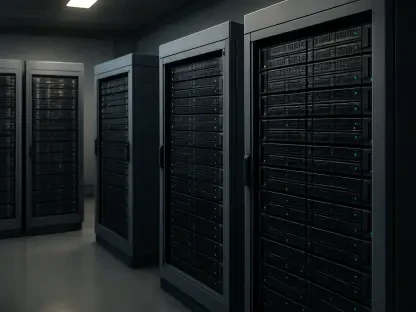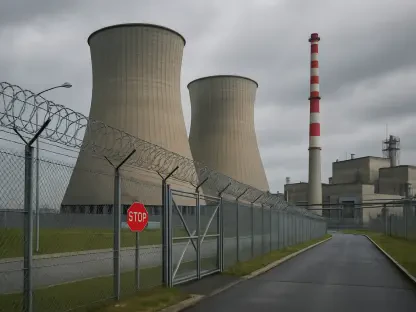In the face of soaring electricity prices in California, the state’s utility demand response (DR) programs, especially those overseen by investor-owned utilities (IOUs), are becoming increasingly scrutinized for their cost-effectiveness. The financial dynamics of these programs prompt critical questions about whether the costs ratepayers bear are genuinely justified by the benefits they receive.
The Emergence of Supply-Side DR Programs
Introduction to SSDR Programs
Initiated in 2015, California’s supply-side DR (SSDR) programs have redefined the landscape by enabling DR aggregators to bid demand-side resources directly into the wholesale market, earning capacity payments through the Resource Adequacy (RA) program. The core principle behind SSDR programs lies in leveraging market forces to ensure that the most cost-effective energy products are chosen to meet grid needs. This economic strategy was intended to lower costs while providing reliable energy supply, fostering a competitive market environment where utility and customer interests align.
Over the past decade, the influence of SSDR programs has been profound, especially for third-party DR providers (DRPs) who have significantly increased their market participation. These DRPs have harnessed the opportunities presented by SSDR programs to expand their presence in the market. However, the entry of IOUs into the SSDR space introduces complexities, primarily due to differing cost structures and funding mechanisms. While third-party DRPs rely on market revenues to cover administrative expenses, IOUs recoup program costs directly from ratepayers, potentially inflating expenditures without direct market competition pressures.
Impact on Third-Party DR Providers
The growth of third-party DRPs under SSDR programs has illustrated a successful model relying on competitive market dynamics. These providers thrive on efficiency, as their administrative and operational costs must remain tightly controlled to stay viable. Historically, third-party DRPs have demonstrated cost-effectiveness, largely due to the necessity of aligning their expenditures with market recovery limits. This competitive constraint fosters innovation and cost containment, directly benefiting ratepayers by keeping overall program costs lower.
In contrast, IOU-administered SSDR programs reveal a different financial landscape. Unlike third-party providers, IOUs have the leeway to set administrative costs covered by ratepayers, unbound by direct market pressures. This flexibility can result in higher program costs, which are transferred to consumers through their utility bills. Examination of Pacific Gas & Electric’s (PG&E) programs, such as the Capacity Bidding Program (CBP) and the Automated Response Technology (ART) program, underscores this issue. The administrative expense contrast between these programs illuminates the broader concern: whether ratepayer investments are optimized for cost-effectiveness, or if they bear unjustified expenses due to generous budget allocations.
Cost Discrepancies in IOU Programs
Administrative Costs Analysis
The financial analysis of IOU programs, such as those managed by PG&E, highlights notable discrepancies in administrative costs, questioning their cost-effectiveness. For example, PG&E’s legacy CBP allocated 9% of its budget to administrative expenses from 2024 to 2027. On the other hand, the newer ART program dedicated 12% of its budget to similar costs, despite targeting comparable load reductions. This jump in administrative costs, coupled with ART’s larger overall budget, driven by substantial participant incentives, raises essential questions about the efficiency of these expenditures.
PG&E’s approach reveals broader systemic issues in how IOU programs operate. The administrative cost surge in the ART program contrasts sharply with the CBP’s more conservative budget, yet both aim to achieve similar objectives. The ART program’s $4.76 million administrative budget over four years dwarfs the $2.35 million set for CBP over the same period. This discrepancy illustrates a potential misalignment between resource allocation and actual program needs, suggesting an absence of stringent financial accountability typically enforced by competitive pressures in third-party DRPs.
Budget Overestimations
Further compounding the issues is the revelation that PG&E can fund CBP expansions using leftover funds from the original budgets, obviating the need for additional rate increases. This admission underscores significant inefficiencies, indicating potential overestimations in initial budget planning. The existence of unspent funds within allocated budgets suggests a systemic tendency to over-allocate resources without demonstrable necessity. This situation brings to light the broader question of whether such unutilized funds should be refunded to ratepayers as bill credits, aligning with Gov. Gavin Newsom’s executive order advocating ratepayer relief.
Inefficiencies within IOU-managed programs could be symptomatic of a larger issue tied to how budget estimations and allocations are handled. Without the competitive pressure that third-party DRPs face, IOUs can operate with less fiscal restraint, potentially leading to resource wastage. This phenomenon reveals the critical need for a reevaluation of budget processes and stricter financial oversight to minimize ratepayer burdens while ensuring effective program outcomes.
Policy Shifts and Market Dynamics
CPUC’s Changing Stance
Historically, the California Public Utilities Commission (CPUC) has maintained a balanced competitive landscape between third-party and IOU SSDR programs. This balanced approach has been instrumental in fostering a healthy competitive environment, where customer choice and market efficiency drive cost-effectiveness. However, a significant policy shift emerged in December 2023, where the CPUC proposed that sustaining the competitiveness of third-party DRPs should be directly linked to delivering cost-effective benefits to ratepayers.
This policy shift signifies a retreat from the previously held stance where market-driven competition between third-party DRPs and IOUs was seen as beneficial. It introduces a layer of regulatory complexity that could undermine the cost-saving principles that define effective DR markets. The CPUC’s new approach could inadvertently impose constraints on third-party DRPs, which already operate under stringent cost considerations enforced by market dynamics, contrasting with the more lenient financial environment IOUs navigate.
Favoritism Towards IOUs
Compounding the issue are recent CPUC policies that increasingly favor IOU-administered SSDR programs over those run by third-party DRPs. This favoritism is particularly evident in incentive programs such as Automated DR and the Self-Generation Incentive Program (SGIP), which are now intricately tied to IOU participation. This trend diverges from the established norm where third-party DRPs could compete on a relatively even footing, leveraging their market efficiencies to deliver competitive value to ratepayers.
The implications of these policies are far-reaching. By nudging customers towards IOU programs, the CPUC inadvertently hampers the competitive landscape necessary for cost containment. The expansion of IOU programs, often justified by the inclusion of SGIP recipients, leads to increased funding requests from ratepayers to support these programs. Consequently, actions intended to ensure cost-effectiveness and ratepayer relief could have the opposite effect, escalating overall rates due to the inherently less accountable financial dynamics characterizing IOU programs.
Implications for Ratepayers
Economic Principles and Competition
The core economic principle that competitive markets drive cost reduction appears increasingly challenged by California’s recent regulatory trajectory. Open competition has historically facilitated cost-effective solutions, compelling service providers to optimize operations to remain viable. However, recent policies seem to divert from this principle by disproportionately favoring IOU programs. This divergence has the potential to saddle ratepayers with higher costs, as IOU programs inherently lack the stringent financial checks that competition imposes on third-party DRPs.
The shift away from embracing competition toward a more controlled market dynamic risks undermining the very goals of ratepayer relief and cost containment. By diminishing the role of third-party DRPs, which thrive on cost-efficiency driven by market forces, ratepayers may face increased financial burdens. The alignment of recent policies with IOU interests, rather than preserving a balanced competitive field, stands to escalate rates contrary to the intended regulatory outcomes, counteracting the principles of effective and accountable energy market management.
Need for Re-evaluation
With electricity prices in California rapidly increasing, there is growing scrutiny on the state’s utility demand response (DR) programs, particularly those managed by investor-owned utilities (IOUs). The main concern revolves around the financial efficiency of these programs. Specifically, questions are being raised regarding whether the costs borne by consumers are actually balanced by the benefits they receive. As more people delve into this issue, the focus is on determining whether these DR programs, intended to manage electricity demand and avoid blackouts, are truly delivering value for the high prices charged to ratepayers. The effectiveness and fairness of these initiatives are being carefully evaluated to see if the promises of savings and energy management hold up against the actual financial burden placed on California residents. New assessments and discussions are sparking around whether these DR programs need reform to ensure that the financial strain on ratepayers results in real, tangible benefits in terms of reliable and affordable electricity.









